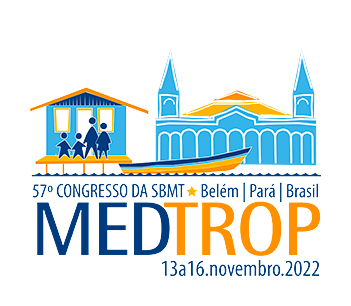Dados do Trabalho
Título
Analysis of gene silencing of the Toll (Toll-like receptors) immune pathway of Anopheles aquasalis during Plasmodium yoelii infection
Introdução
Malaria is an acute febrile disease responsible for the highest morbidity and mortality among neglected tropical infectious diseases. It is caused by parasites of the genus Plasmodium, which are transmitted to humans during the blood meal of the infected anopheline vector. Upon being infected by Plasmodium, the anopheline's immune system is activated to combat the spread of the parasite. Studies carried out with Old World vectors (Africa and Asia) show that infections by Plasmodium sp. alter the expression of effector genes and antimicrobial peptides (AMPs) belonging to the Toll immune pathway (Toll-like receptors), which is known to have anti-Plasmodium activity. However, little is known about the vector-parasite interaction process involving New World anophelines. Therefore, understand the immunology of the vector-parasite interaction in American vectors is needed.
Objetivo(s)
To determine the role of key genes of the Toll pathway in the immune system of the Brazilian anopheline Anopheles aquasalis infected by the murine model Plasmodium yoelii.
Material e Métodos
Using the RNAi technique, the Toll, Cactus (negative regulator), and Rel1 genes were silenced and the impact on infection was evaluated.
Resultados e Conclusão
The silencing of Toll and Cactus in An. aquasalis resulted in reduced infection intensity (number of oocysts per midgut) and infection rate (number of infected mosquitoes per challenged mosquito) compared to the control. In contrast, the silencing of Rel1 increased the intensity of infection compared to the control. This increase indicates an important anti-plasmodic activity of Rel1, which may reflect the production of effector molecules with anti-plasmodic activity and AMPs. Concerning the Cactus gene, whose silencing would reflect on the increase in the activity of the Toll pathway, there was the expected effect, showing that this gene would have an important role on components of the pathway, promoting anti-plasmodic activity. Differently, the Toll gene silencing, upstream in the signaling cascade of the pathway, showed the opposite effect of the expected. This result indicates that the reduction in expression of the Toll gene can generate a compensatory effect by activating other mosquito immunity pathways, thus impacting the infection. Additional studies are needed to understand the exchange between the different immunity pathways and the roles of their components in combating Plasmodium infections in the American anopheline vectors.
Palavras-chave
Toll immune pathway, gene silencing. An. aquasalis.
Área
Eixo 04 | Entomologia / Controle de Vetores
Categoria
NÃO desejo concorrer ao Prêmio Jovem Pesquisador
Autores
Breno dos Anjos Costa, Alessandra da Silva Orfanó, Raquel Soares Maia Godoy, Rosa Amélia Gonçalves Santana, Wuelton Marcelo Monteiro, Marcus Vinícius Guimarães Lacerda, Nágila Francinete Costa Secundino, Paulo Filemon Paolucci Pimenta
